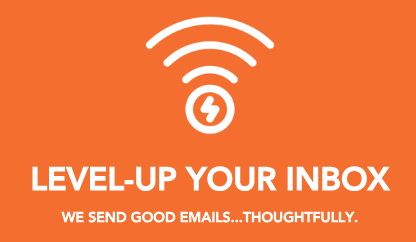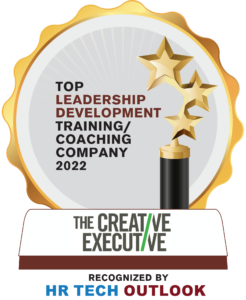360 Assessments Take Leadership From Good to Great
No doubt you’ve heard of 360 assessments. You may already have an executive 360 program or have hired a resource to organize one within your company. Beyond all the 360 hype, we’ve put together an overview of what they are, how they work, why you and your company might want to do these, and the benefits of enlisting a third party to manage and administer the process.

Data doesn’t tell the whole story of leadership. Great leadership requires delivering on easy-to-quantify things like producing good work that moves the numbers. If you’re an executive-level professional, you’ve already established a record of high performance. Next-level leadership, for your career longevity, engagement, and your company’s continued growth, requires a host of softer skills and harder-to-measure dimensions. 360 assessments help people get the perception of their leadership in a way that individual performance reviews cannot. They help executives see how they’re showing up in a human way. Executive 360s tell the more significant, harder-to-quantify leadership story, becoming an increasingly important leadership development tool for growing companies.
360 Assessment Basics
360 executive assessments span a 4-6 week period in which the people you work with, up, down, and across the organization are interviewed about you. For each executive, there are 12-15 direct reports, peers, and managers, which encompass around 30 hours of facilitated interviews. Skilled 360 practitioners then distill the themes and broad insights from the interviews into a narrative brief for the executive and the company.
What are the interview questions?
All questions are open-ended and designed for conversation. This process is not about yes-no answers, it’s about people’s whole perception of you as a leader. Context and fluid conversation are essential for meaningful 360 assessments.
The questions range from those defined by the organization, like ones that hit upon cultural competencies, how well they develop their teams, and leadership and communication styles. The questions can also encompass broader things like reflecting the values and vision of the organization. If you enlist a 360 partner like The Creative Executive, we will suggest questions based on our discovery conversations with your organization. All questions hopefully engage the interviewees to paint a fuller picture of what your leadership looks like in practice.
What’s in the debrief report?
The deliverable at the end of the 360 executive assessment process is a narrative roadmap for the individual and the organization. The Creative Executive breaks down our insights by interviewer group (direct reports, peers) and then into strengths and opportunities. We further segment feedback into broad categories like communication, management style, and capability/credibility. We intentionally leave the categories broad enough to catch everything that comes up, though we exclude isolated, one-off situations. The goal of the insight report is to be a balanced, bias-free narrative that validates and provides areas for refinement.
The 360 reports can inform how you can level up in your role today and across your whole career. In tandem with executive coaching, 360s can be a powerful tool for the individual leader. The biggest shock for many participants is often how people perceive how they treat others. For example, high positivity doesn’t always equate to being warm and approachable.
Our favorite aspect of the 360 insights report is that it gives executives an opportunity to do a victory lap, in addition to outlining opportunities for development. High-performing executives often have trouble celebrating the wins, an essential skill that is super important to embody and model for their teams.
The insights reports are observations, not facts. The emerging themes are what’s important. When you hear similar observations from direct reports, peers, and managers, there is a kernel of truth to explore. The report illustrates areas where the executive might want to fine-tune, but it is not a professional development plan per se.
You have the report. Now what?
For many of our clients, we not only administer the 360 assessment process and distill the insights into a debrief for the individual and a top-line report for the company, but we often take it a step further. This can involve designing a course of action for both the individuals (usually in the form of 1:1 coaching) and the company (a broader leadership development program that hits upon key objectives for the organization, based on the themes derived from the 360s). As with every client engagement, we use the information to inspire action and accountability. We are with you every step of the way.
Why Should Your Organization Offer a 360 Program?
Smart companies trying to future-proof their business must go beyond their typical performance reviews. A 360 assessment program, especially with executive coaching, demonstrates a commitment to developing and retaining top talent. This investment in high performers and big thinkers gives their people the greatest opportunity for success.
The discovery the individual executive undertakes through the assessment process will benefit them in their current role and beyond. We find that leaders love the 360 assessment work, but it can be scary too because it requires a lot of vulnerability. Many of the executives we work with are successful high-performers, so focusing on the softer side of their leadership can be both enlightening and surprising. By the end of the 4-6-weeks, participants know themselves better, and they understand how to make a greater impact in the company and across their careers.
For a company that engages in a 360 executive assessment program, there are opportunities to understand if leaders are in line with the company values and are successfully moving the needle forward in those values beyond the bottom line.
The ripple effect benefits the whole organization. A 360 assessment can help executives understand their impact and find more alignment in their roles. One of the things we see happen again and again is that the interviewees also get insights into how they show up. They might uncover a weak spot or a communication mechanism that holds them back. New awareness and a healthier feedback loop increase executive productivity, which trickles down to the team, creating a healthier company overall.
Why You Should Enlist a Partner for Your 360 Program
Administering a fully impartial 360 assessment program internally is difficult. We are confined by the cultural lens of our organizations. It’s human nature. Autopilot is problematic, especially when it’s entrenched in organizations.
Working with a third-party such as The Creative Executive to facilitate your 360 programs expands the lens and the filter. We come in with fresh eyes and objective professional expertise. Because we are outside the organizational structure, people feel safer opening up and providing honest (frankly, more useful) information. We can probe further into the insights. A good 360 facilitator sees themes and synthesizes them in a way that a person within the organization often cannot.
As a 360 partner, we help the organization translate the cultural needs and values into questions. A recent client engagement provides a great example of this as it relates to DEI+B (Diversity, Equity, Inclusion + Belonging). The company, a global tech organization, wanted clarity into the internal perception of the company’s diversity and inclusion effort. Our interviews uncovered the need for fundamental work on the executive leadership front—to better define and communicate what DEI&B means and the company’s vision for action. Diversity and inclusion consistently came up in the interviews, including discussions about communication styles, how well leaders develop/sponsor/mentor their people, and how leading through influence (a tenet of the company’s leadership culture) helped and hindered efforts. The distance and expertise of our team enabled us to deliver this important information to the company strategically.
Interested in starting a 360 assessment program for your senior leaders? The Creative Executive can help invest in your executives and tell a more holistic leadership story in your growing organization. Connect with us.
What does a 360 program look like in practice? Read our latest case study. The Creative Executive helps a data-driven technology leader deepen its leadership bench through 360 assessments and executive coaching.

About the Author
Susan Franceschini is a purpose-driven leader, advisor, and executive coach. Working with executives and teams, Susan helps them drive growth and workplace culture through assessments, strategizing around leadership development programs and people management, and advising and providing strategic support in times of organizational transition.


